Table of Contents
1980s Kids Toys: The 80s were a blast for kids growing up in that era. One of the most exciting times of the year was when the Sears or Montgomery Ward Holiday catalog arrived in the mail. Inside, there was a treasure trove of fun, from vibrant dolls to crazy car tracks and science kits. Every kid could find something to dream about. These toys weren’t always from the 80s, but they sure left a mark on the growing up experience.
Though the 80s had their ups and downs, they offered plenty of carefree fun. Kids spent hours with toys that became unforgettable parts of their childhood, shaping not only their lives but also the generations to come. Let’s take a look at some of the beloved toys that kids in the 80s cherished, along with those that shone brightly and then faded away.
PONG – The Start of Video Game Craze
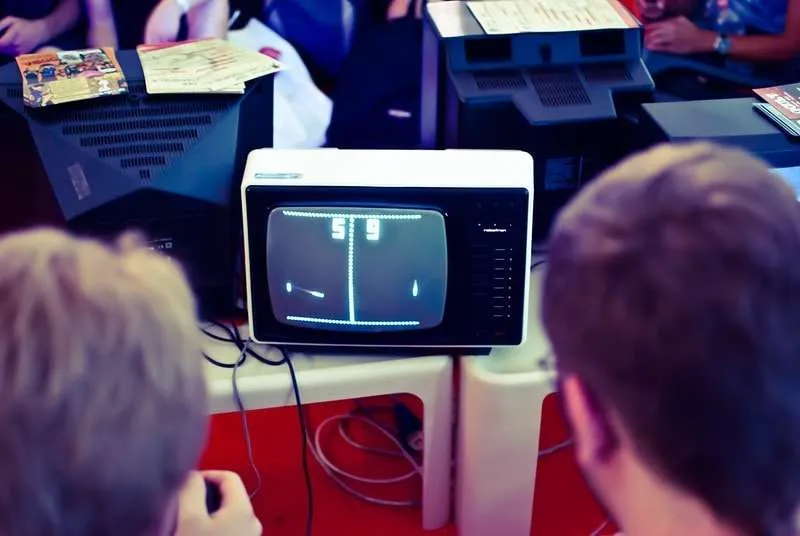
A simple idea turned into a revolution. Pong, a game with two paddles made of 8-bit lines, aimed to keep a ball from going off the screen while trying to outsmart the other player. Originally an arcade game, Pong quickly found a home on televisions thanks to Atari’s home version in 1975, featured in the Sears Catalog. The game’s popularity soared through the early 80s, introducing many kids to home video gaming – a passion that would later give birth to bigger games and names.
Atari – Unleashing Home Gaming for 80s Kids
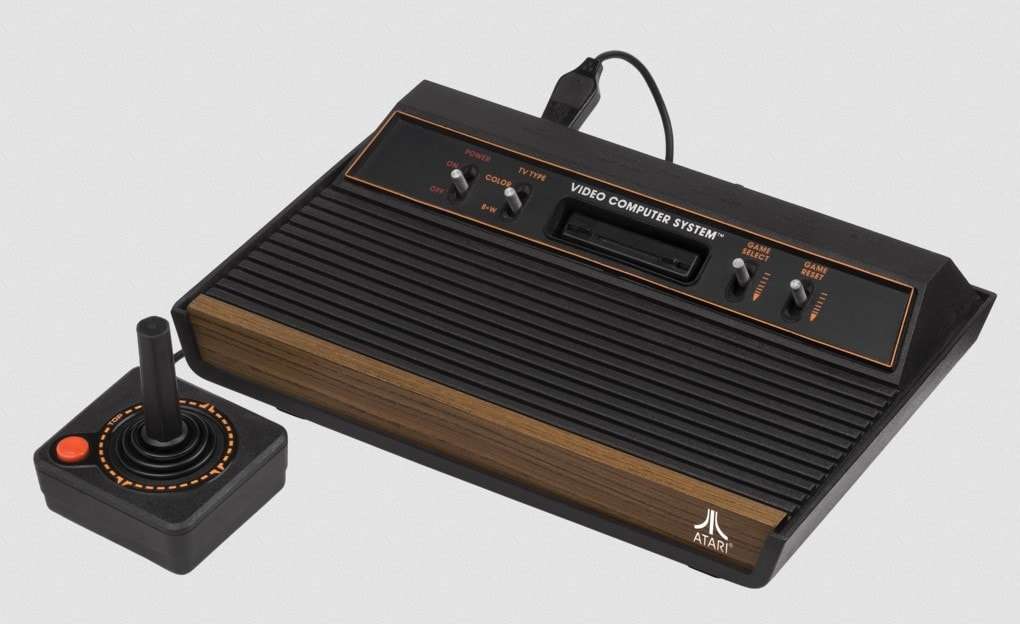
Despite its fame in the 80s, Atari faced challenges after its 1977 launch. Competition came from Intellivision and ColecoVision, both marketed as sophisticated alternatives. However, in 1978, Atari licensed popular games like Space Invaders. The real game-changer came in 1982 when they adapted a maze chase game into a cartridge: Pac-Man. This move propelled Atari, with over 7 million copies sold and increased console sales.
Game Cartridges – The Heart of 80s Gaming
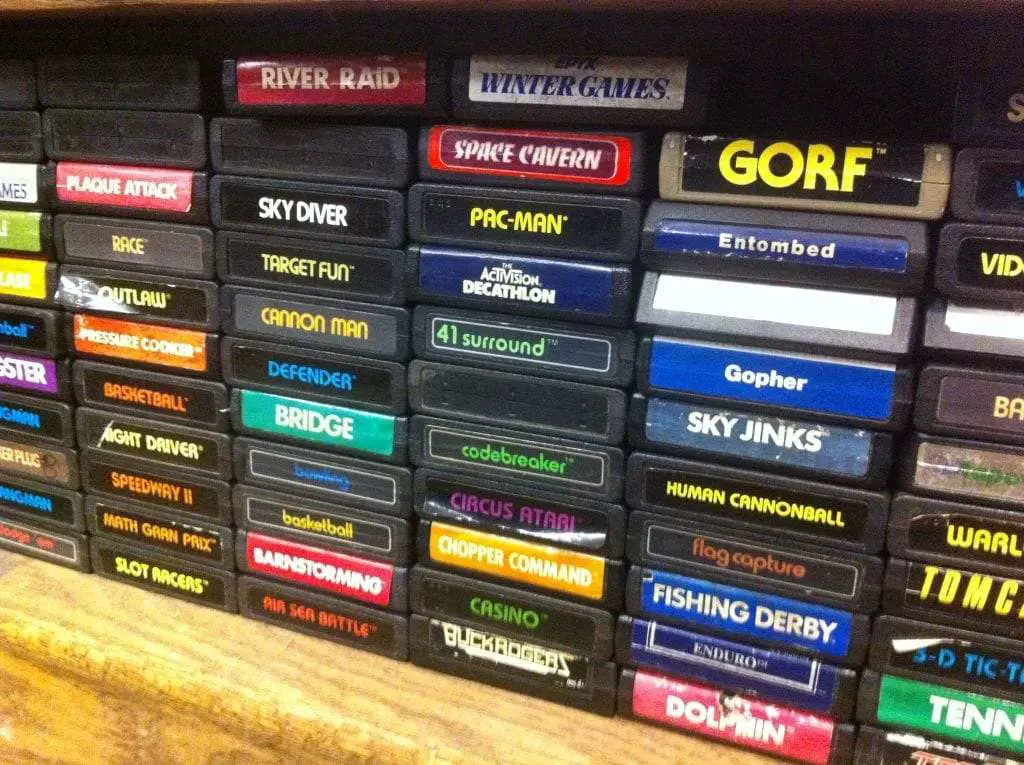
Kids in the 80s with gaming consoles often owned an Atari, Intellivision, or ColecoVision. These consoles relied on cartridges for games. Unlike today’s downloads, the entire game, from levels to action, was stored in the cartridge. Certain games were popular across systems, but each system had its unique games. The treasure lay in amassing a cartridge library spanning Atari, Intellivision, and more.
Pac-Man – From Video Game to Playroom Favorite
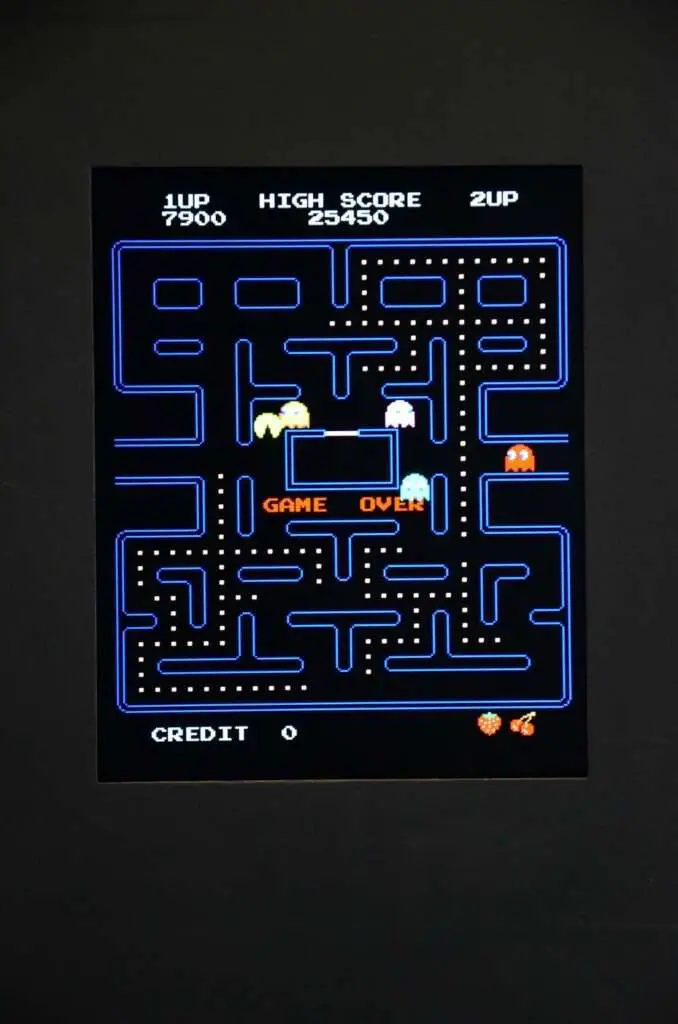
Pac-Man and Ms. Pac-Man ruled the toy kingdom alongside their video game success. The game was simple: a yellow character with eyes and a mouth ate dots while avoiding colorful ghosts. In 1982, Coleco secured the license to create Pac-Man figurines. Hanna-Barbera crafted a Pac-Man cartoon, and a song called “Pac-Man Fever” hit the airwaves. The influence was everywhere, even in a Hanna-Barbera Pac-Man series. By 1983, Pac-Man had become an iconic figure of the 80s, much like Mickey Mouse.
The Nintendo Entertainment System (NES) – Shifting from Quality to Quantity
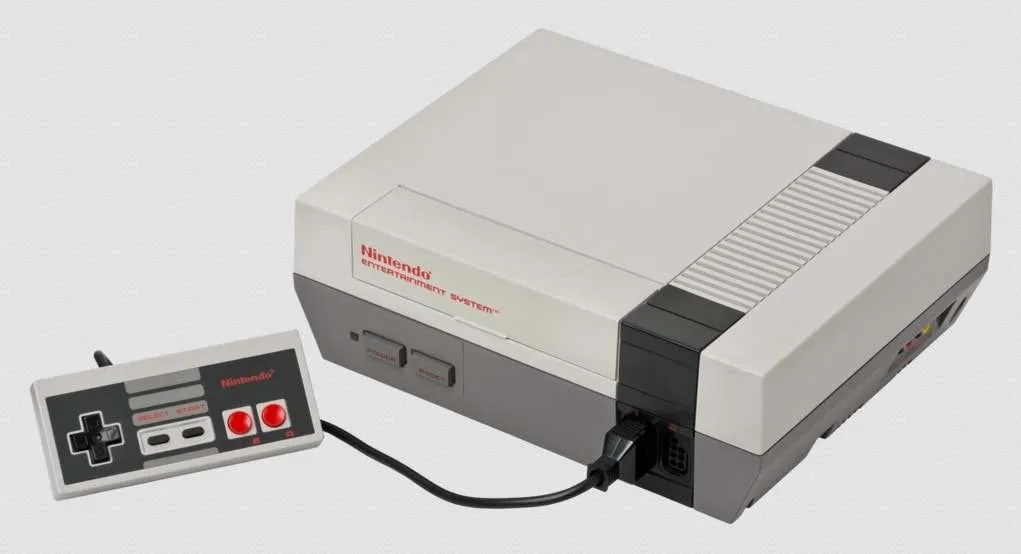
After Atari’s early 1980s success, the home gaming scene faced a setback due to hastily made, low-quality games like Atari’s E.T. debacle in 1982. But while Atari struggled, Nintendo, a long-standing Japanese entertainment company, entered the home gaming market. Their NES system arrived in North America in 1985, revitalizing the industry. Unlike Atari, Nintendo tightly controlled game developers. Third-party creators could only release two games annually and were exclusive to Nintendo. This approach paid off, with Nintendo selling a staggering 62 million consoles as other systems declined.
Merlin – Handheld Fun
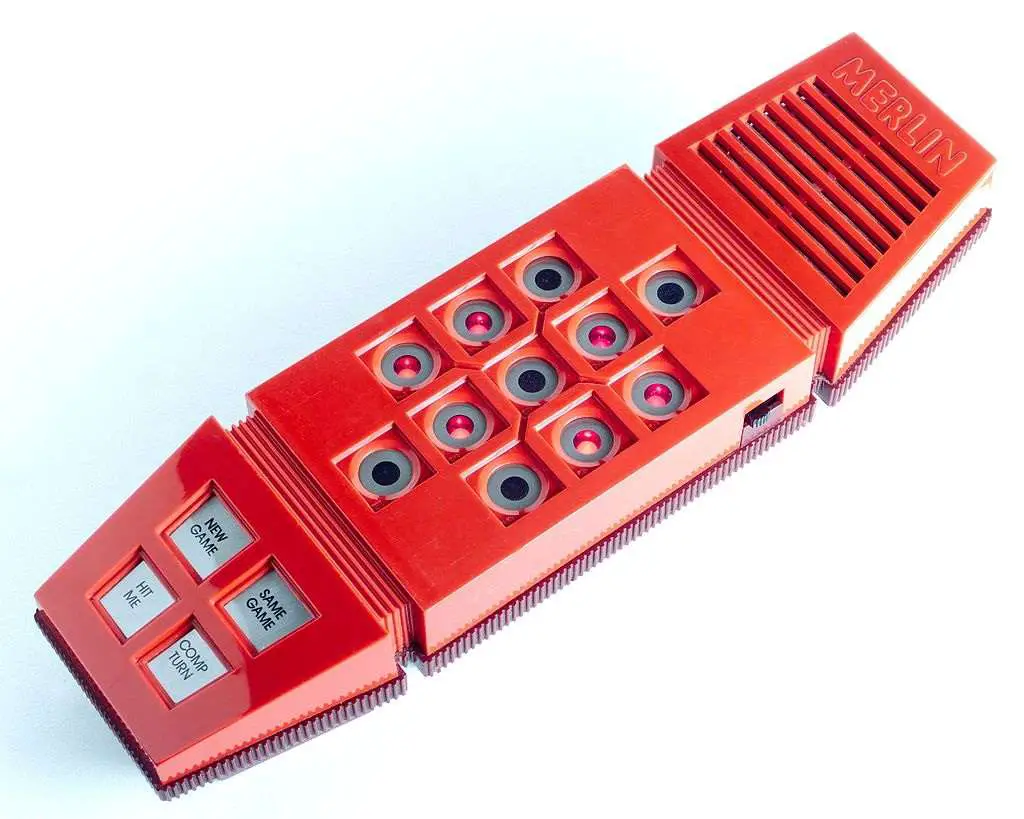
While TV gaming was taking off, handheld electronic games remained popular. Merlin, by ex-NASA employee Bob Doyle, emerged in the late 1970s and stayed popular in the 1980s. The red, slender device featured segments and LED buttons, offering six games like Tic-Tac-Toe. The microprocessor inside ran on batteries, making it portable. Millions were sold, inspiring more advanced electronic games.
Simon – A Memory Game Changer
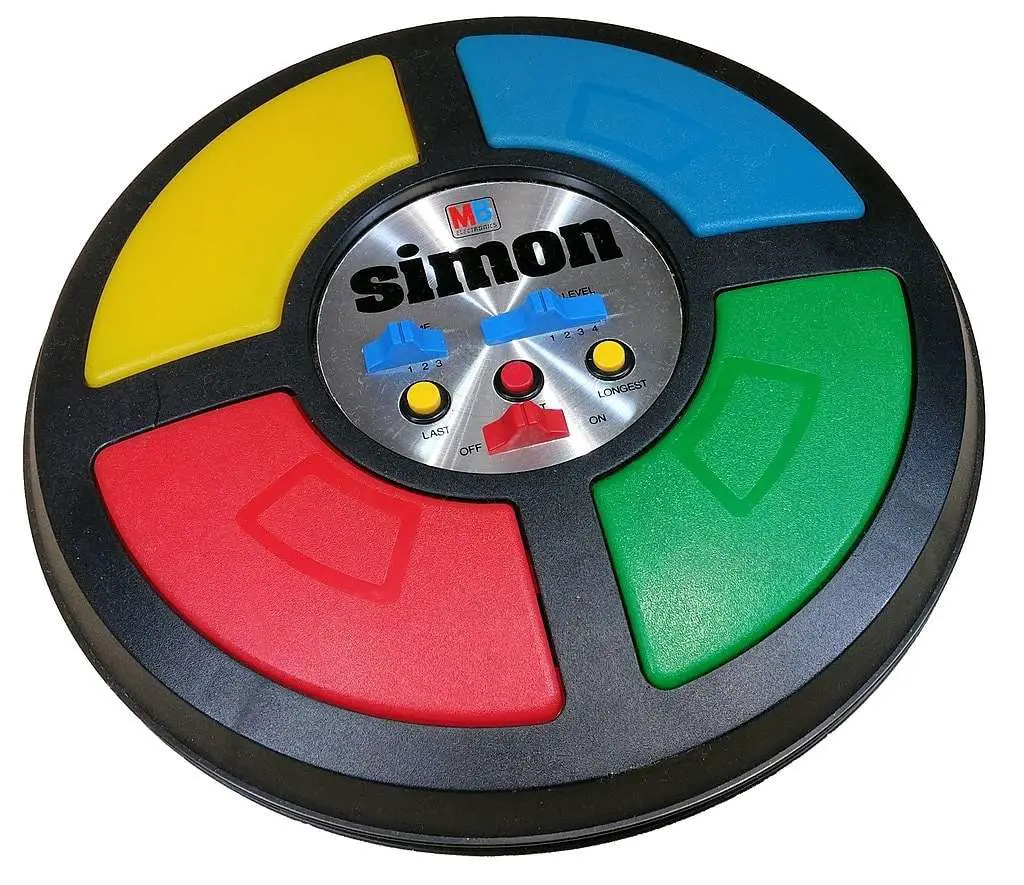
Around the same time, another electronic game was making waves. Simon, created in the late 1970s by Ralph Baer and distributed by Milton Bradley, featured a circular design with colored buttons. Players followed tones and lights, testing memory and reflexes. Similar games followed, but Simon remained iconic and continues to sell today.
The Little Professor – Math Fun for Kids
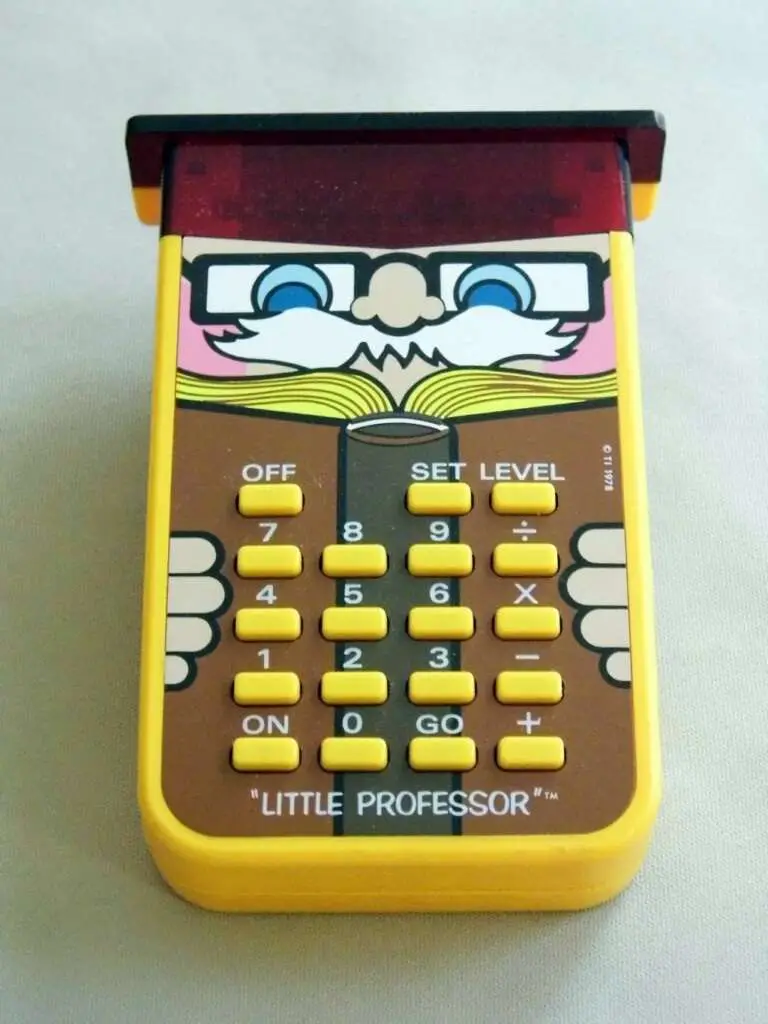
Texas Instruments introduced The Little Professor in 1976, merging math with electronics. This handheld device gave math problems, rewarding correct answers. Its popularity extended into the 1980s, making math engaging for all, and setting the stage for educational electronic toys.
Speak and Spell – Fun Learning
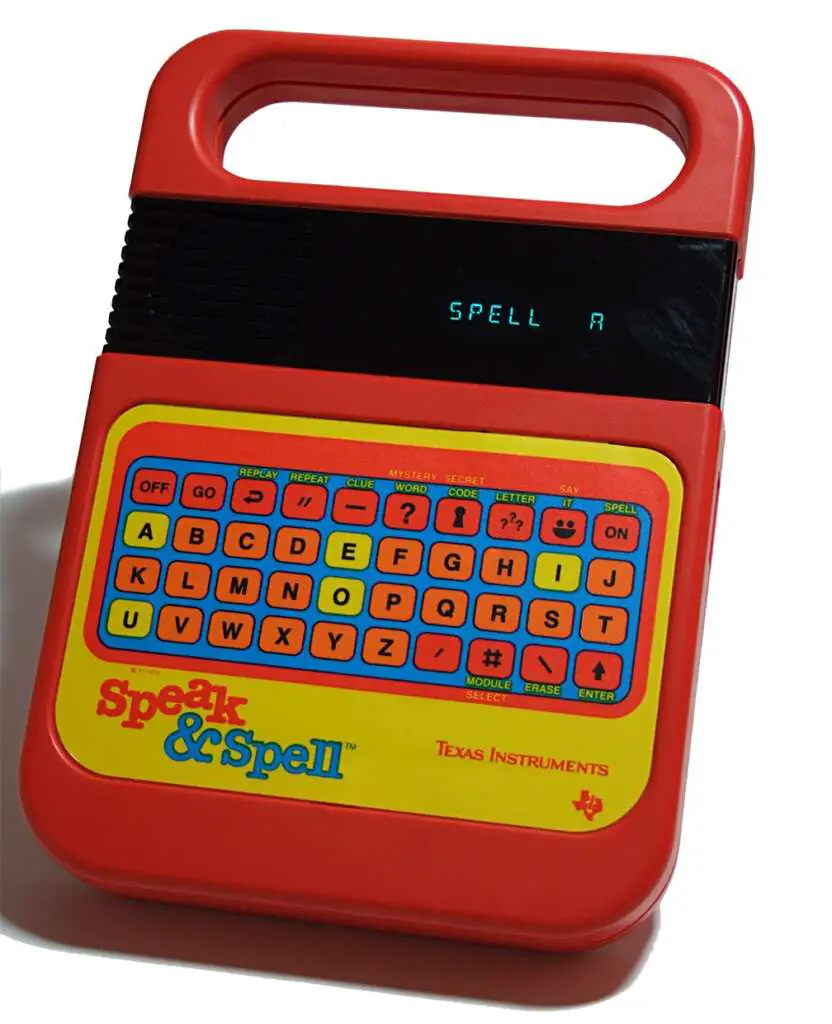
Amidst the rise of video games, handheld electronics thrived. Texas Instruments, known for calculators, took a chance in the late 1970s with Speak and Spell. This solid-circuit device combined fun, technology, and education by challenging players to spell words. Its appearance in “E.T.: The Extra Terrestrial” boosted its fame.
E.T. the Extra-Terrestrial – Merchandising Sensation
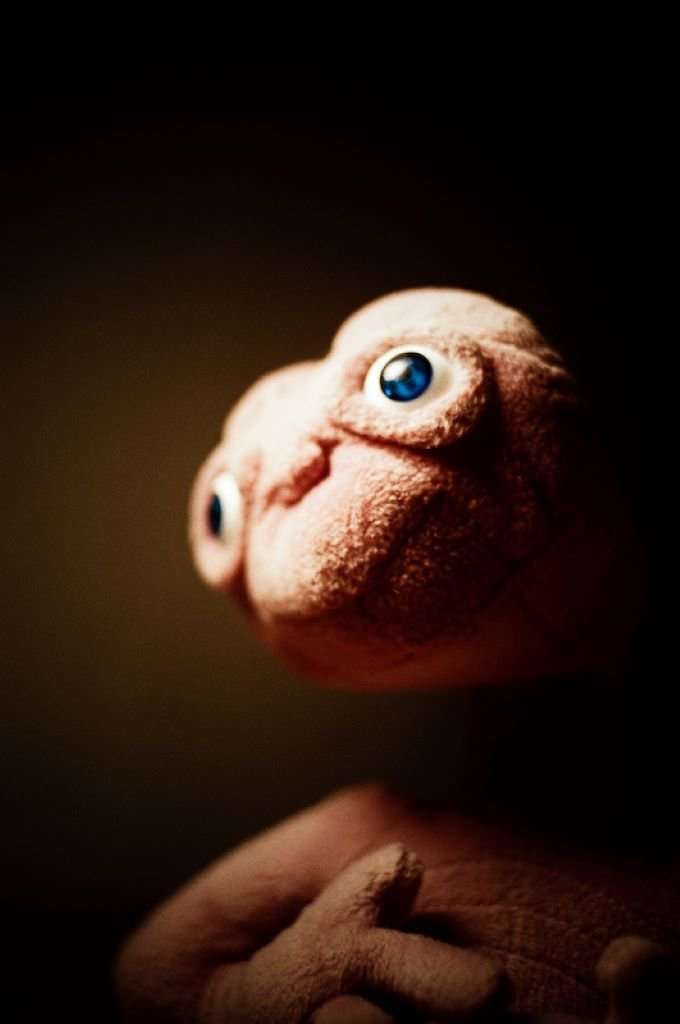
The hit 1982 film, “E.T.,” became a merchandising marvel, from Reese’s Pieces to Speak and Spell devices. E.T.’s lovable image appeared on countless products like toys, clothes, and even cereal. The film’s success paved the way for franchise-based merchandise.
Star Wars Action Figures – A Galactic Hit
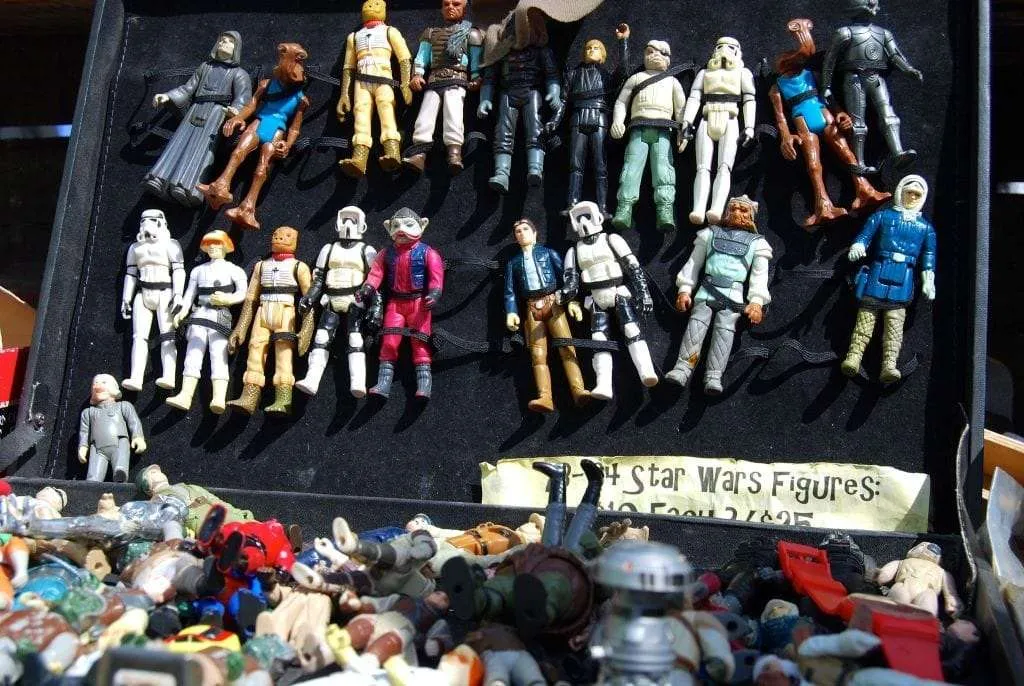
Star Wars revolutionized merchandising with its action figures, ships, and playsets. These toys, tied to the epic saga, gained immense popularity in the late 1970s and continued well into the 1980s. The Star Wars universe expanded into daily life, creating a lasting phenomenon.
The Star Wars Toy Phenomenon – A Timeless Trend
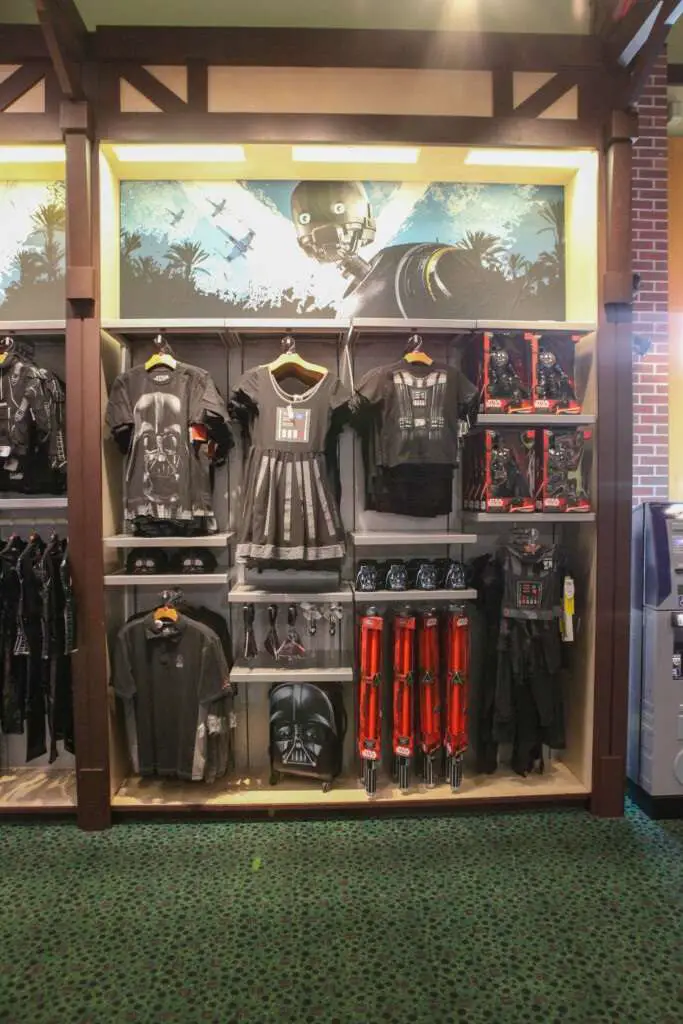
Star Wars merchandise created an enduring phenomenon. From pajamas to backpacks, kids immersed themselves in the universe. The franchise’s lasting power remains, crossing generations and keeping the Empire alive.
Merchandising in the 1980s – A Cultural Shift
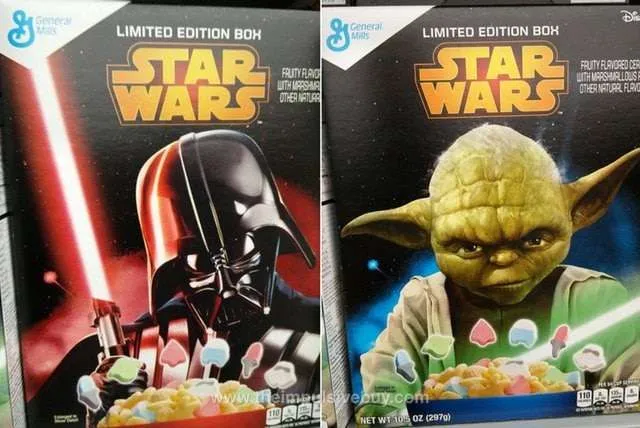
Star Wars epitomized successful merchandising, influencing Saturday morning cartoons and inspiring dedicated characters. The era marked a surge in character-driven products, expanding beyond toys to electronics, décor, and more. These items became portals to imaginative worlds, fostering beloved characters like the Smurfs, Care Bears, and My Little Pony.
The Smurfs: From Comics to Kids’ Favorites
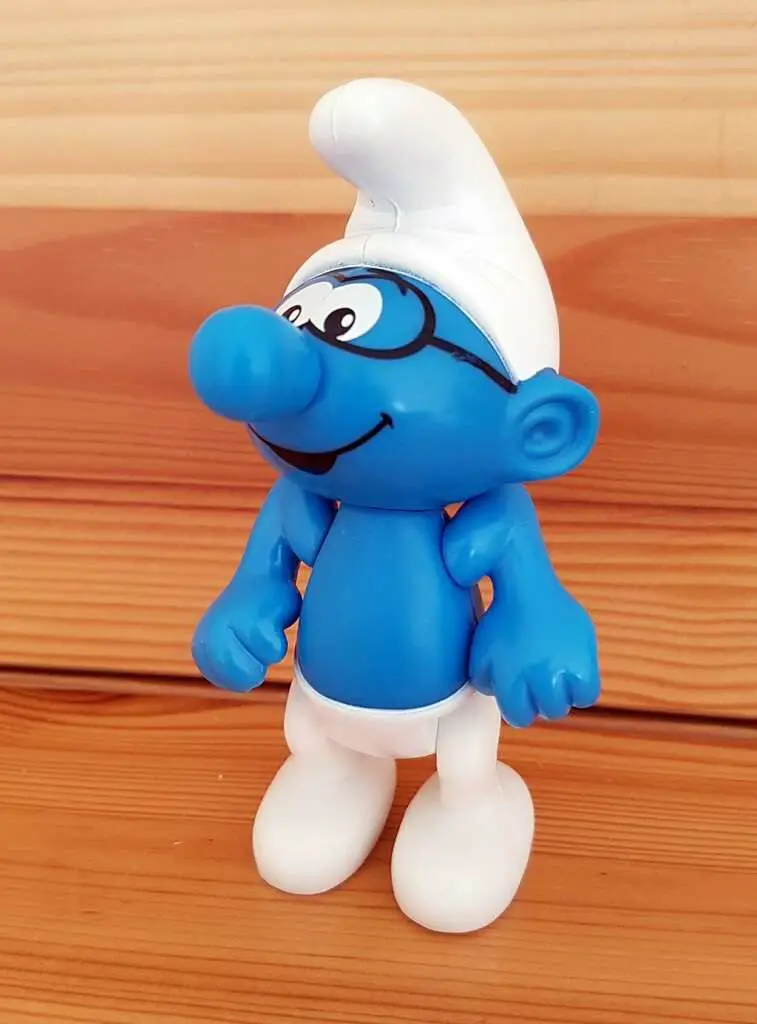
The remarkable success of Star Wars toys taught toymakers the magic of tying toys to TV and movies. The Smurfs, these little blue forest creatures with white Phrygian hats, taught teamwork and adventure. They started in a Belgian kids’ book in 1957 as “Schtroumpf.” In 1979, NBC and Hanna-Barbera launched a Saturday Smurf cartoon. It became a hit, and in 1965, Smurf toys debuted. But it was the show’s merchandise that made Smurfs iconic in the 80s. By the mid-80s, Smurfs were everywhere – TV, toys, clothes. Kids even traded Smurf figurines like currency. This trend of TV tie-ins marked the mid-80s.
Snorks: Underwater Fun
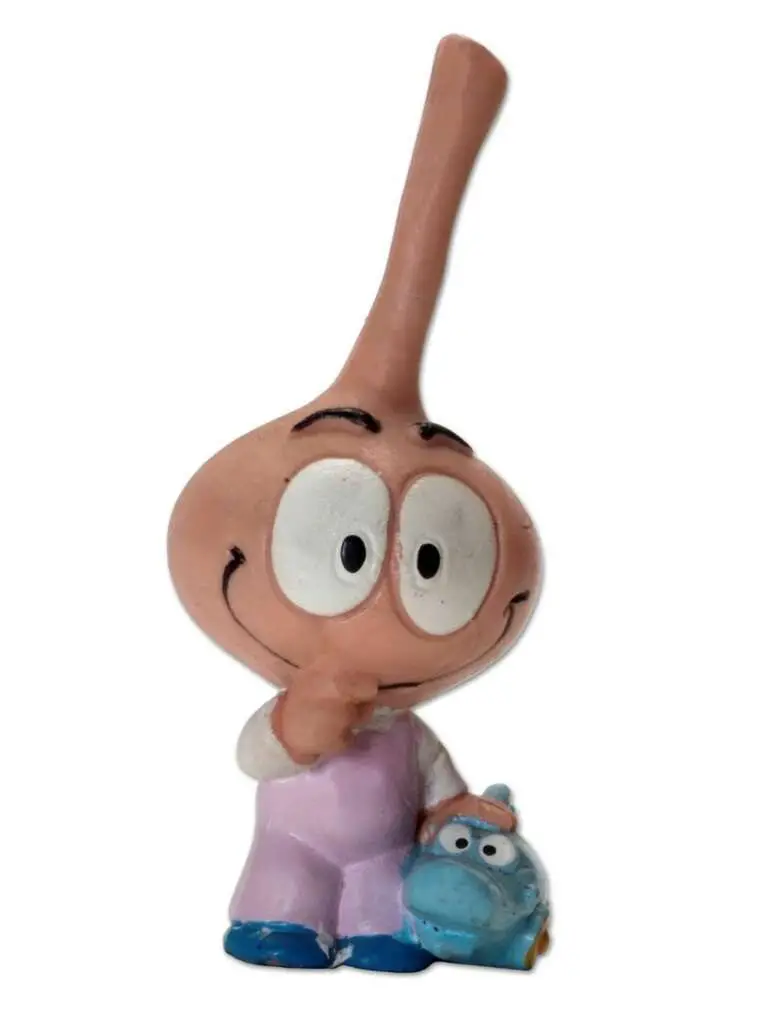
Hanna-Barbera kept the momentum with the Snorks. These small underwater creatures lived in Snorkland, with snorkels atop round heads for speedy swimming. Each Snork was distinct, dressed in various colors with unique faces, reflecting their personalities. The show thrived for four years and, like the Smurfs, the Snorks conquered the toy world. Collectible figurines, bedding, and plush toys followed, cementing their spot alongside Strawberry Shortcake and Care Bears.
Care Bears and Strawberry Shortcake Dolls: Hugs and Happiness
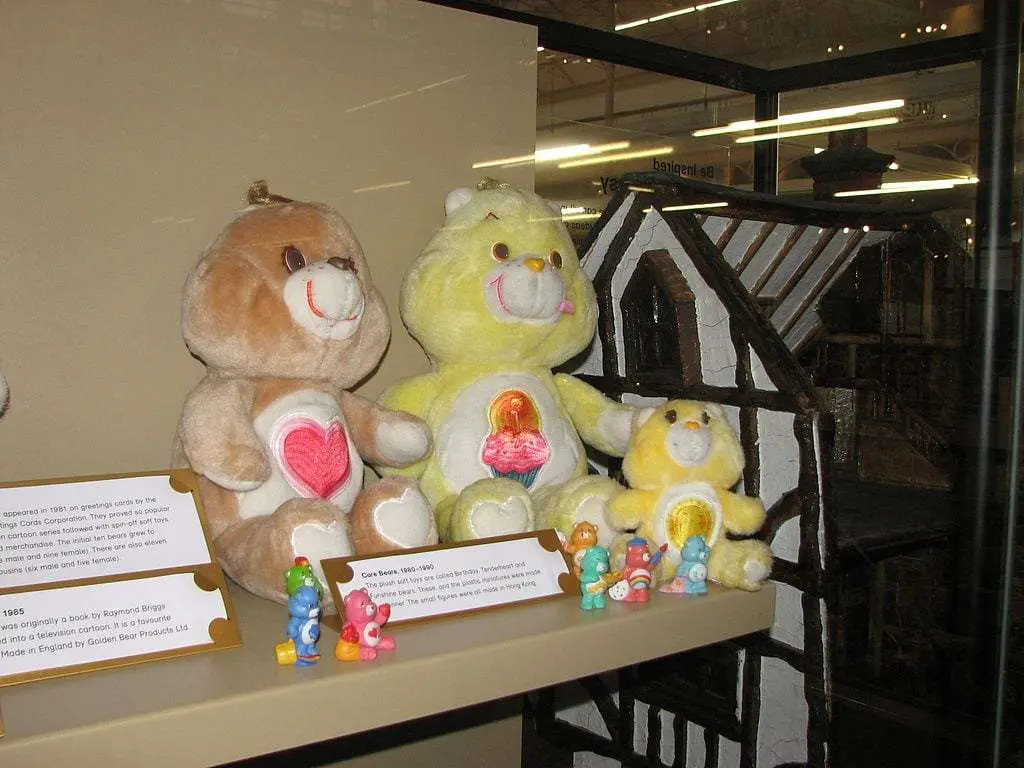
Joining the Smurfs, Strawberry Shortcake and Care Bears in the 80s were major hits. Strawberry Shortcake, evolving from an American Greetings card character, led to a doll line in 1979. Care Bears arrived in 1983, each bear having a unique emblem symbolizing a trait. They became a toy line, later a TV series and movie. While Strawberry Shortcake fostered creativity with articulated dolls, Care Bears comforted kids and helped express emotions.
Shirt Tales: Communicating Animals
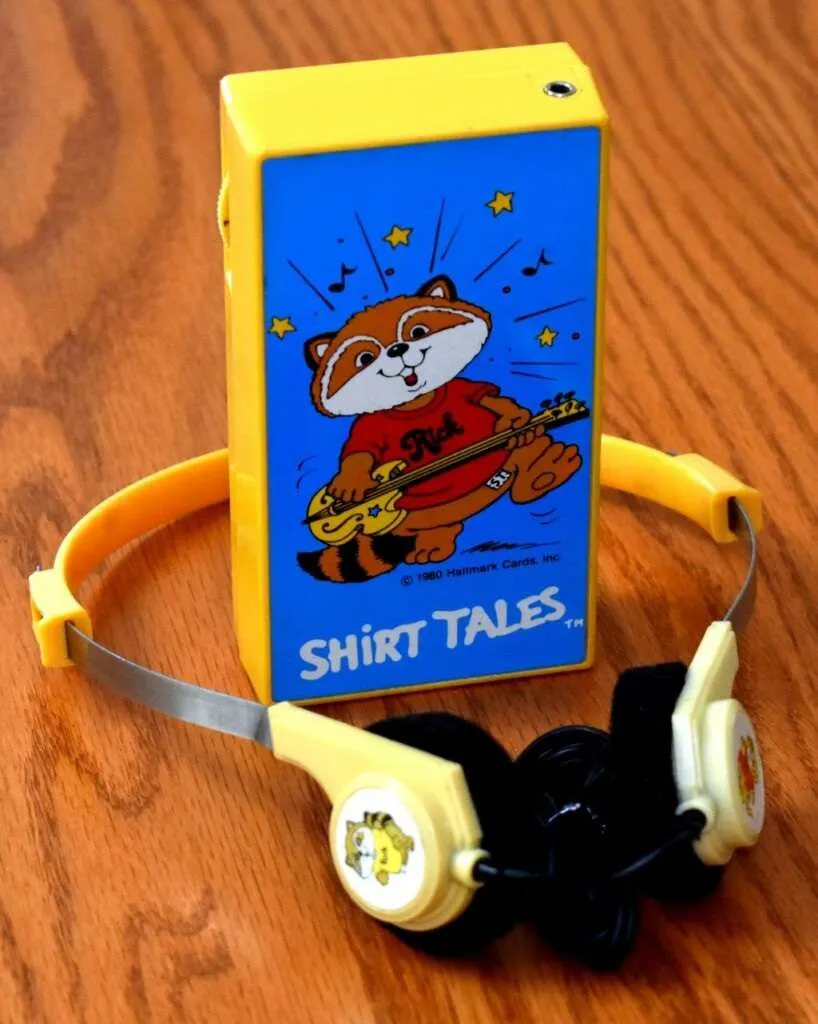
Shirt Tales, another Hanna-Barbera creation, featured animals like Pammy Panda and Rick Raccoon with T-shirts displaying changing words. Unknown to their human friend, they were secret crime fighters. Their success translated into merchandising like T-shirts, toys, and even headphones through Hardees. Though not as enduring as Transformers, Shirt Tales sparked fond memories among 80s kids.
Rainbow Brite: Spreading Joy
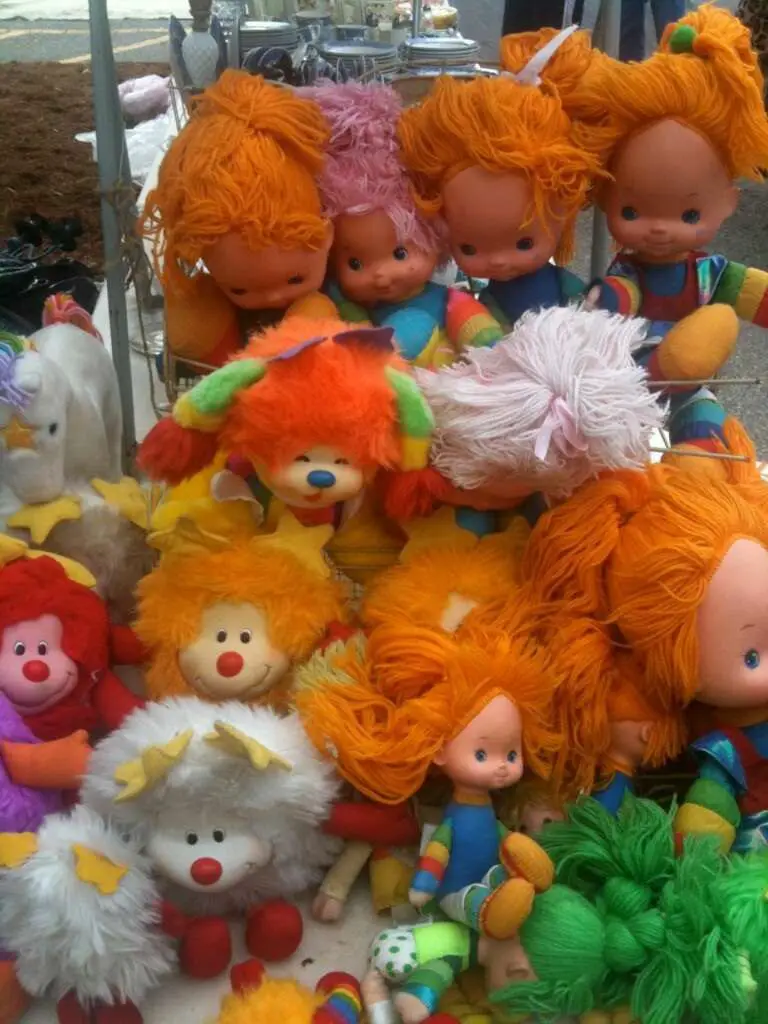
Hallmark reached new heights with Rainbow Brite in 1984. Created solely for a toy line, Rainbow Brite brought color and happiness with her friends Starlite and Twink. Color Kids joined the fun, leading to a series, books, and partnerships with Disney, DiC, and Mattel. Despite criticism as a marketing tool, Rainbow Brite’s merchandise raked in billions, remaining relevant even in modern times.
Cabbage Patch Dolls: A Parent’s Headache
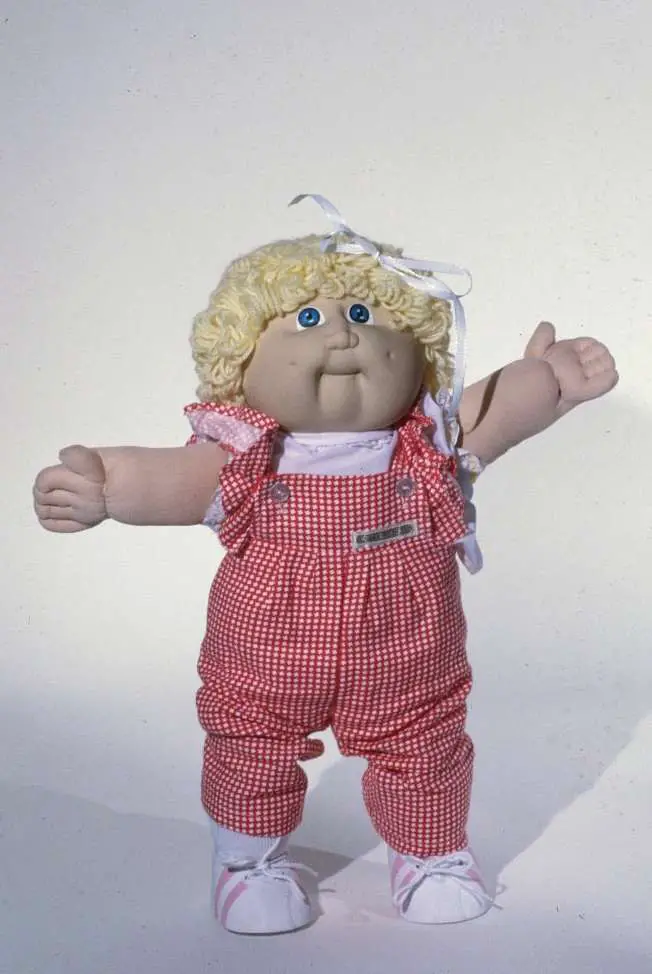
Care Bears, Strawberry Shortcake, and Smurfs met their match with the Cabbage Patch Doll. With unique features and names, these dolls, designed by Martha Thomas and Xavier Roberts, took over the market. The dolls’ popularity caused fierce battles among adults in 1983 as everyone sought one for the holidays.
Transformers: More than Meets the Eye
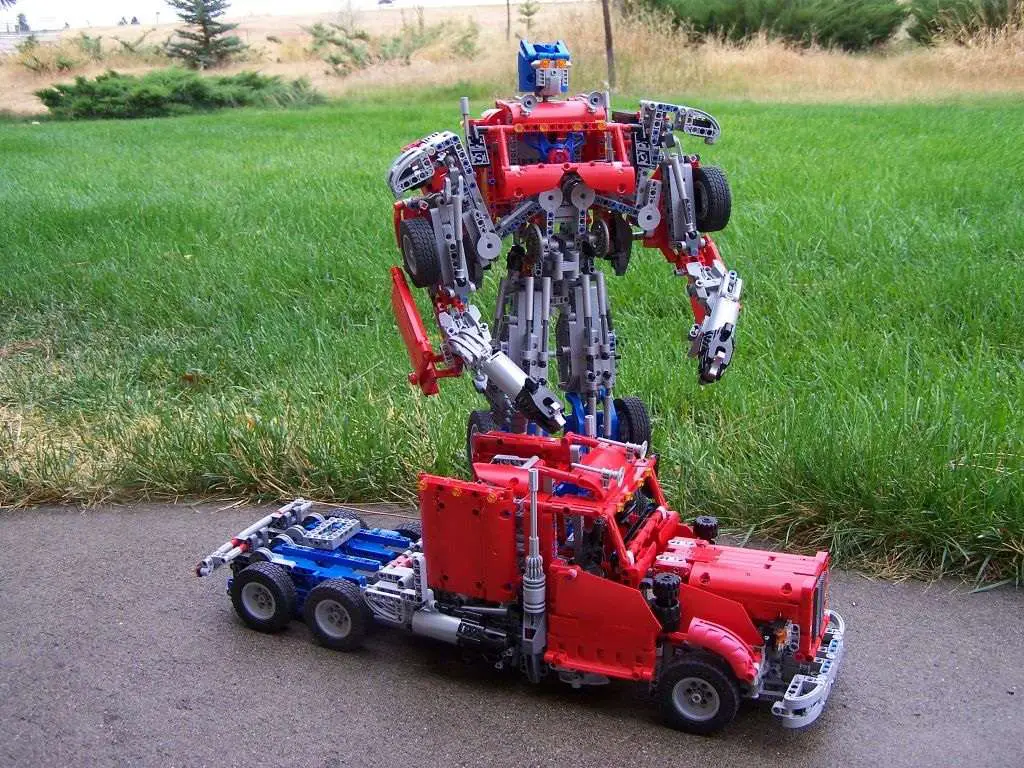
While dolls like Care Bears and Cabbage Patch ruled, action-seekers craved adventure. Transformers, born from Takara Toys’ Diaclone line, emerged in 1983. Autobots and Decepticons brought battles to Earth, captivating audiences. A TV series followed in 1984, sparking a phenomenon that endures. Transformers stood tall, while similar toys like GoBots faded.
Voltron: Joining the Transformable Robot Scene
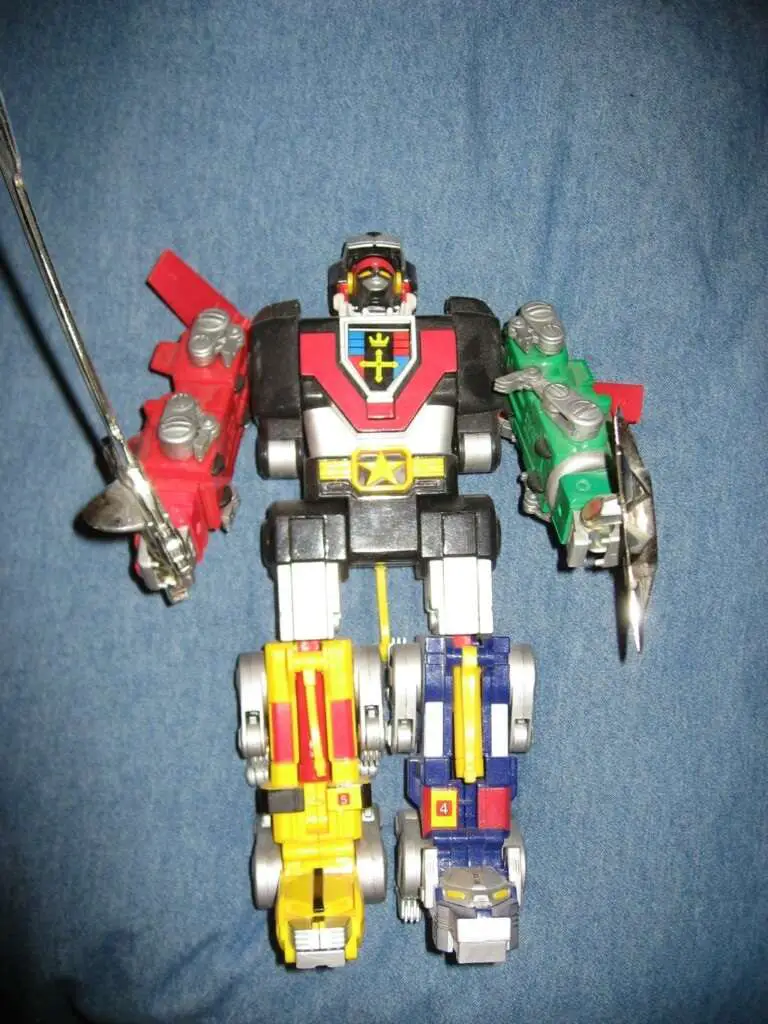
Amid the Transformers’ triumph, 1984 welcomed Voltron, based on Japanese animated series. Explorers and high-tech vehicles united as mega-robot Voltron. Kids assembled and disassembled Voltron, reliving the show’s climax. Although lead paint led to a 1986 recall, Voltron stayed a quiet force, with a 2018 series and ongoing toy production.
He-Man and the Masters of the Universe: Action Figures and Adventure
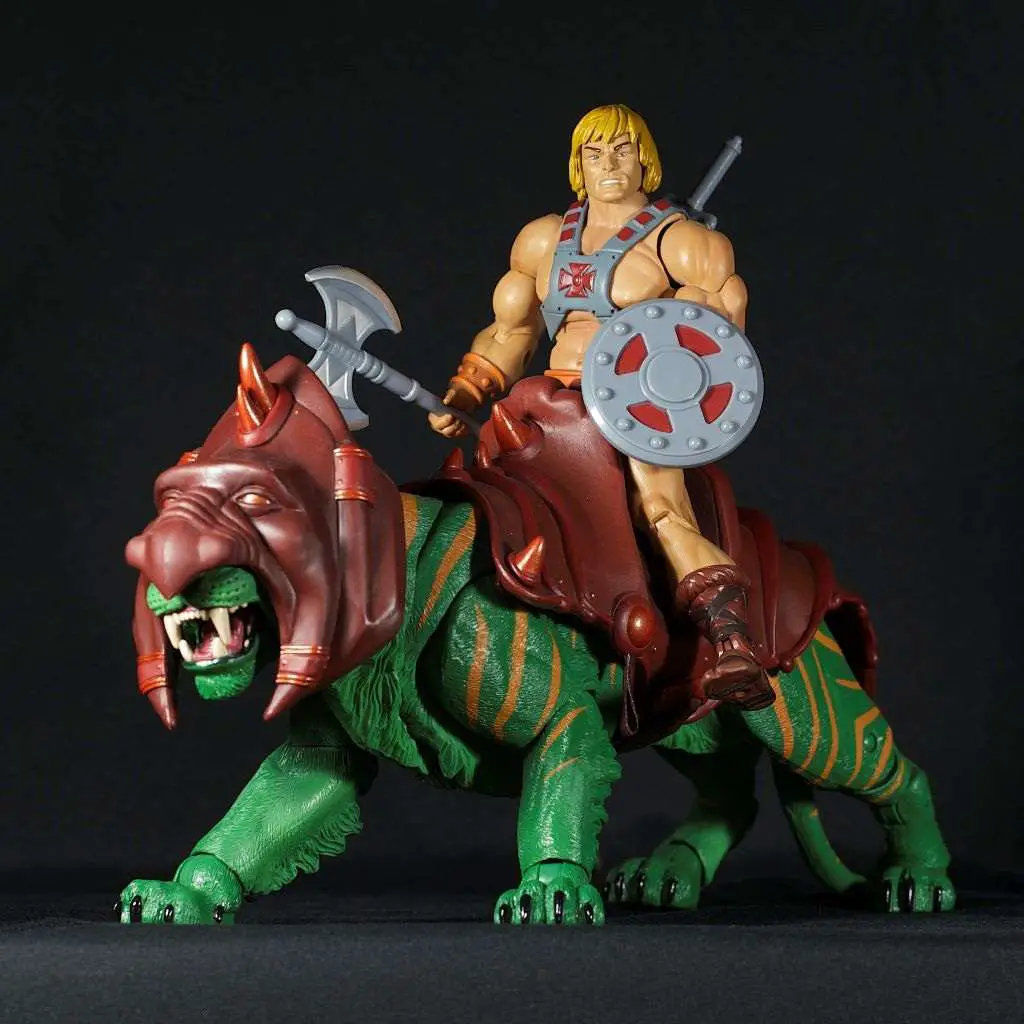
Similar to Transformers, He-Man and the Masters of the Universe kicked off as a toy line in 1981. The action figures were a hit, leading to a cartoon series in 1983. It unveiled the tale of Prince Adam, who transforms into He-Man to fight his foe, Skeletor, for Eternia’s control. Critics dubbed it a toy commercial, yet kids remained captivated. The FCC even banned Mattel commercials during broadcasts due to this claim. Regardless, He-Man, She-Ra (his sister with her own show), and Eternia’s universe stayed in 80s hearts.
Garfield Toys: Lasagna-Loving Phenomenon
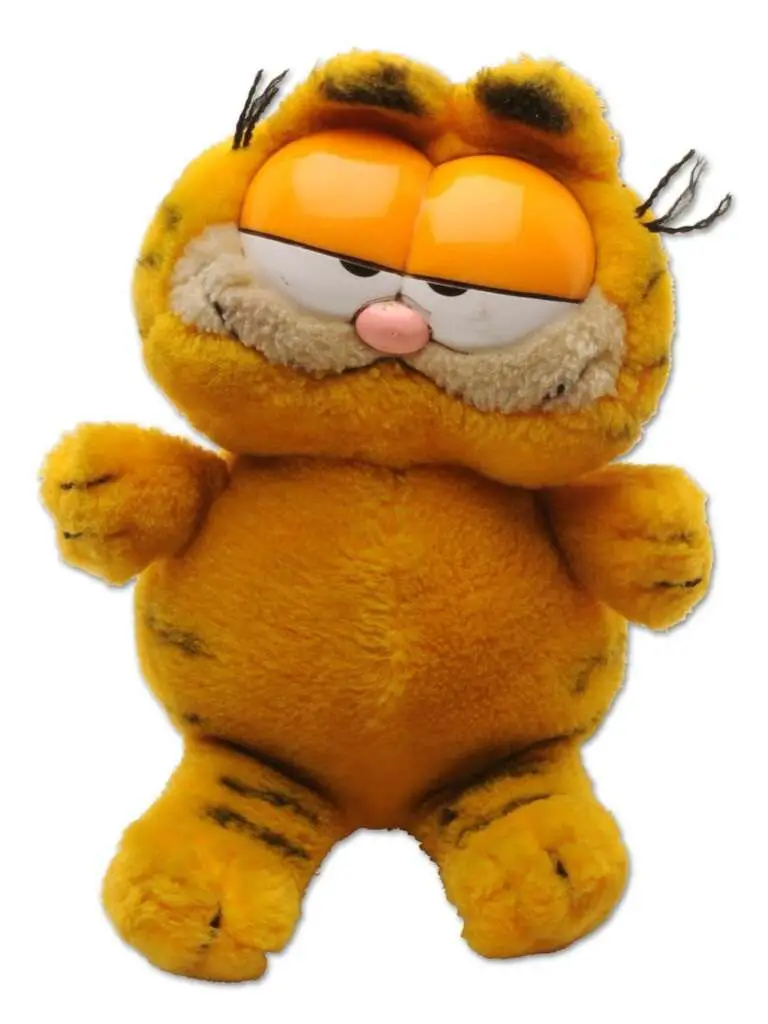
Jim Davis launched his comic, Garfield, in 1978. By the 1980s, it became more than a comic, evolving into a merchandise powerhouse. Davis candidly admitted he created Garfield as a marketable character, following trends in popular cartoons. Garfield’s character remained uncontroversial, enabling merchandise dominance. Toys and clothes featuring the lasagna-loving cat flourished. The Garfield phone even made an appearance. Adults joined the fun, sticking Garfield plushies on car windows during road trips. Garfield’s merchandise reign continues.
Bloom County Toys: Subtle Comic Charm
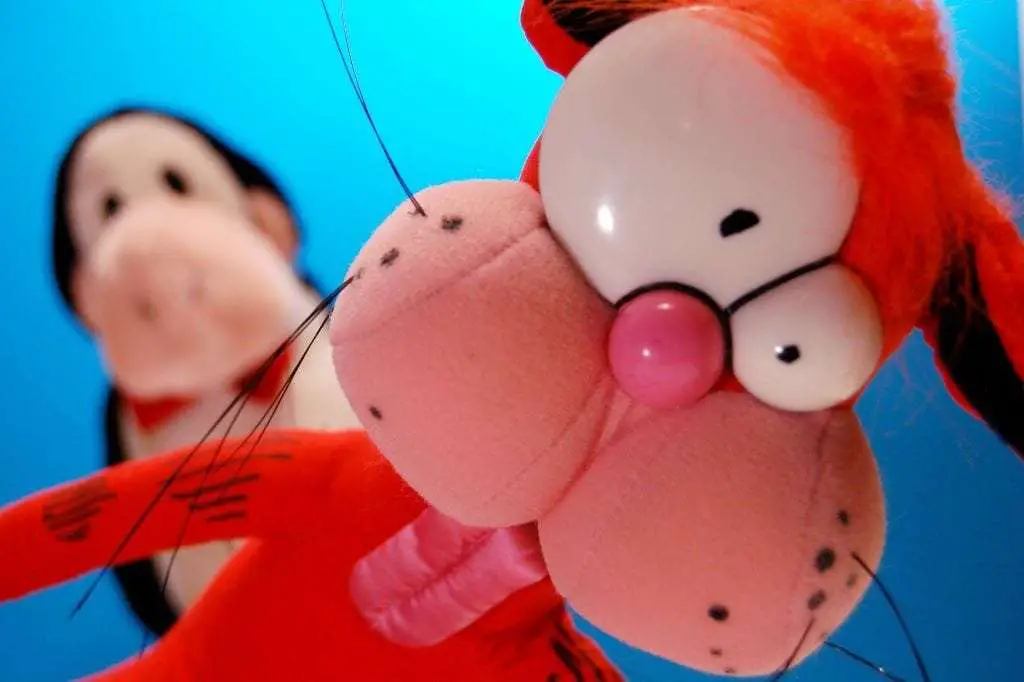
In the 80s, Bloom County, a politically inspired cartoon akin to Doonesbury, introduced quirky characters like Opus the penguin and Bill the Cat. Amid the Garfield-style merchandising boom, Bill and Opus adorned toys, shirts, and figurines. Creator Berke Breathed aimed for the anti-Garfield, creating Bill as an intentionally unappealing character. However, Bill’s imperfections resonated, making him relatable. Breathed’s experiment, opposing the norm, ironically drove toy success.
Ronald McDonald Dolls: Clowning Around
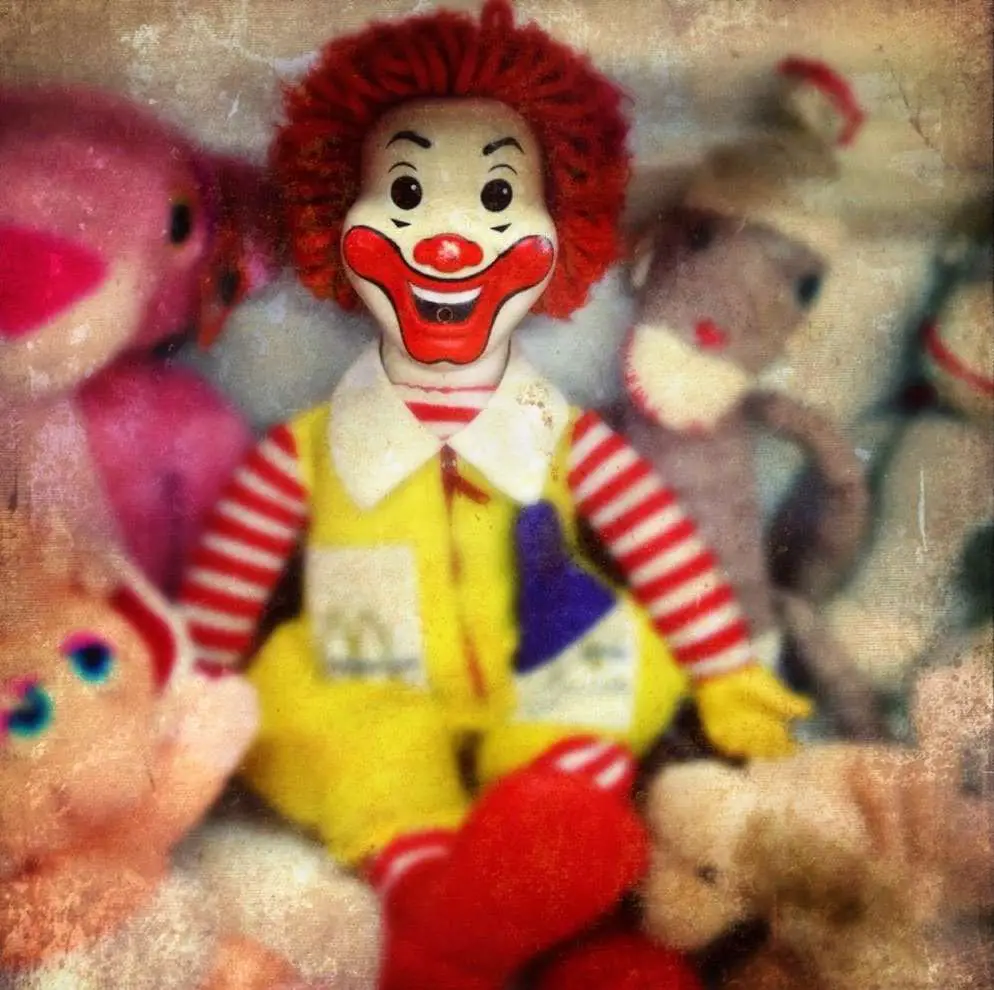
Amidst the 80s toy craze, Ronald McDonald dolls stood out, promoting a different kind of product: hamburgers. In 1971, McDonald’s launched a 16 to 17-inch Ronald McDonald cloth doll, donning the iconic yellow jumpsuit. It symbolized the restaurant, not just as a salesman but a fun representative. The doll lingered in kids’ spaces, reminding them of McDonald’s treats and leaving a lasting impact.
My Pretty Pony to My Little Pony: A Colorful Transformation
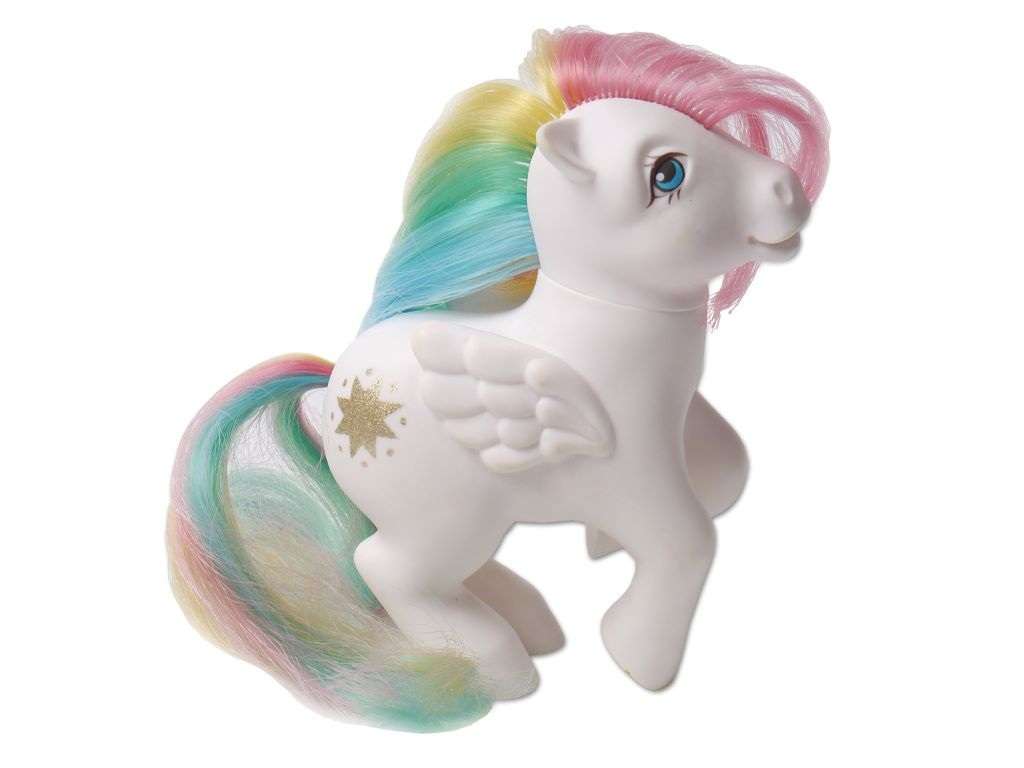
Hasbro’s My Pretty Pony, a 10-inch brown horse with movable parts, paved the way for My Little Pony in 1983. The scaled-down pink version evolved into a sensation. Six differently colored ponies, each with a personality symbol, stole hearts. Over thirty years, My Little Pony blossomed into a pop culture phenomenon.
Sectaurs: A Hybrid Adventure
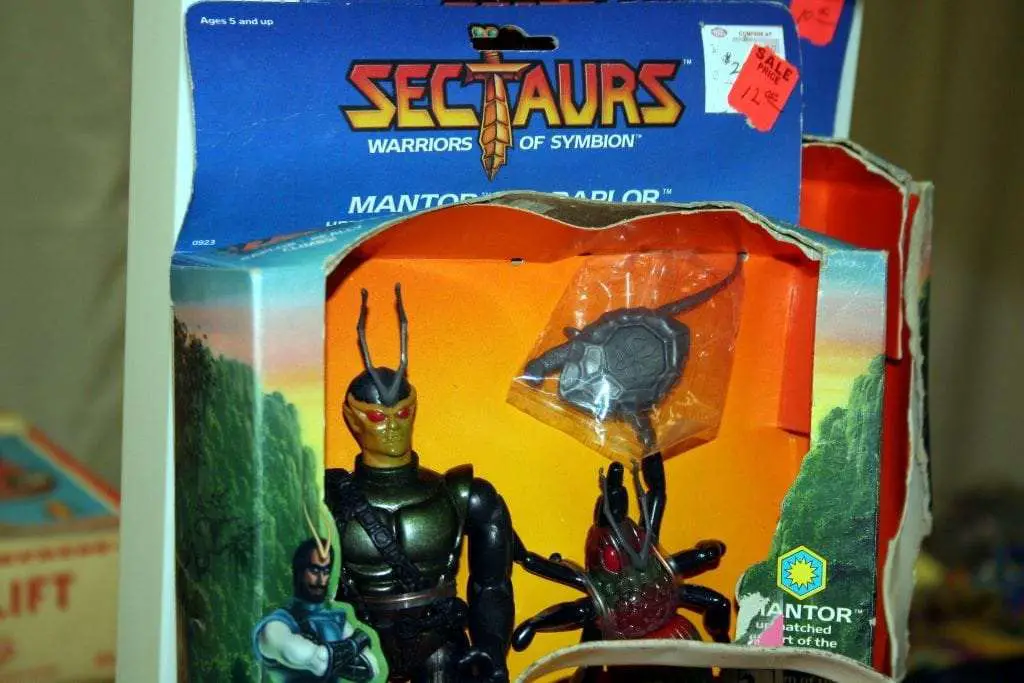
Coleco, known for home gaming, ventured into toys with Sectaurs in 1985. This human/insect hybrid line, alongside a Marvel comic and an animated series, featured noble Prince Dargon battling General Spidrax and Empress Devora for Hyves’ power. Despite challenges against the fantasy toy craze, Sectaurs endured and rumors of a revival circulate.
Pillow People: Cuddly Nighttime Companions
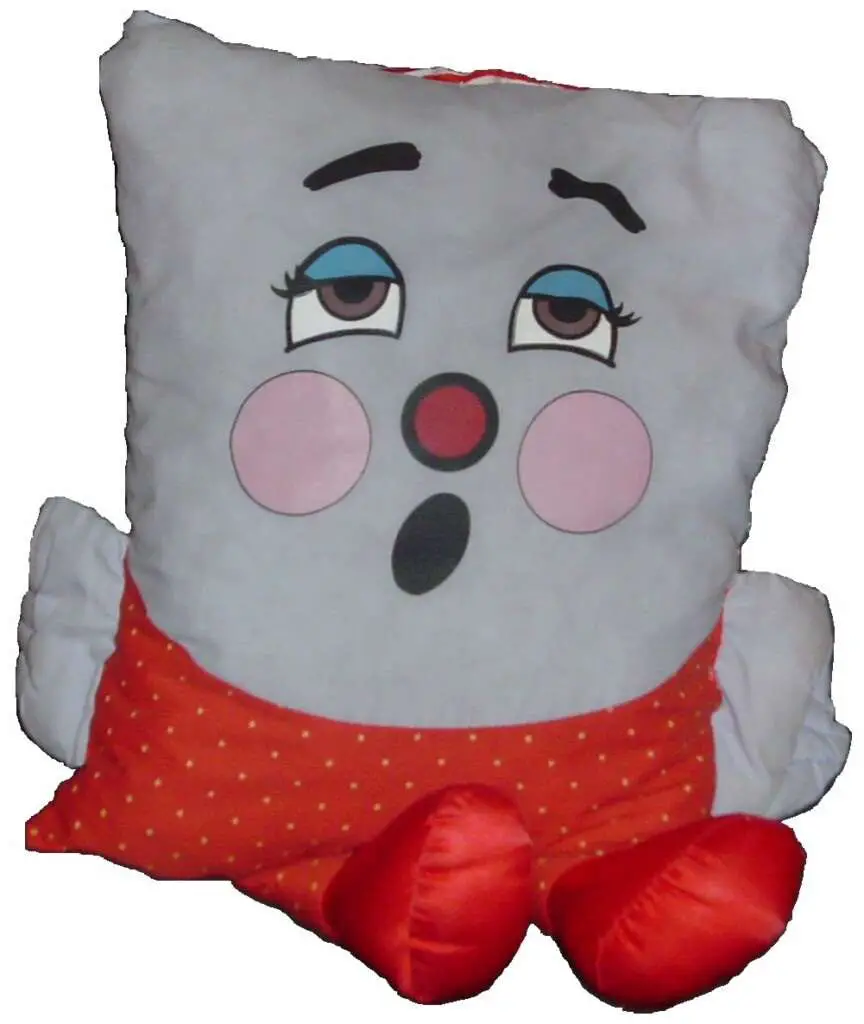
Pillow People, predecessors to Pillow Pets, debuted in 1986, defying TV or movie origins. These standard-sized pillows bore cartoon characters with attached limbs and accessories. Though technically home decor, they captivated kids. Spring Industries and PSE Marketing raked in $120 million, expanding Pillow People into bedding, figurines, books, and even a Christmas special.
Rubik’s Cube: Universal Puzzle
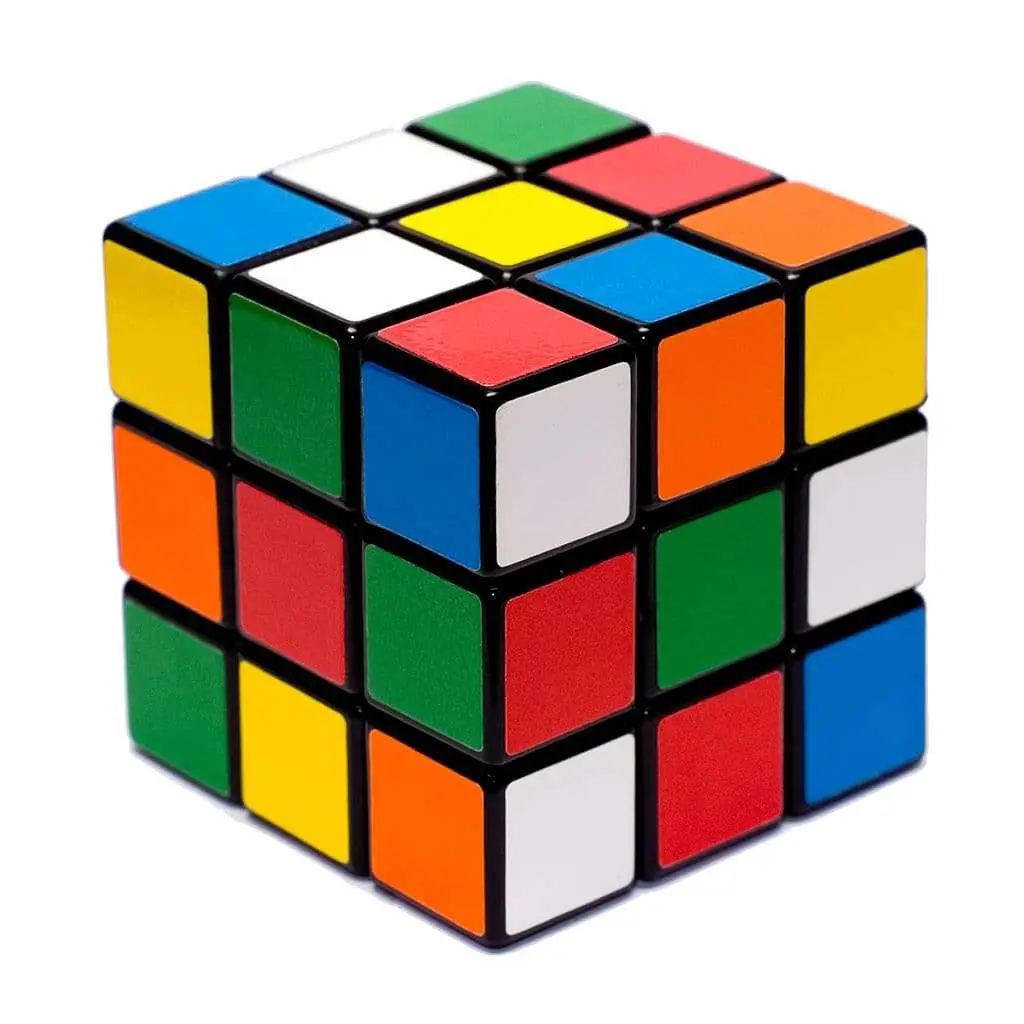
Amid electronic games, Rubik’s Cube emerged as an iconic non-electronic marvel. Introduced in the 70s and popularized in the 80s, this 3D puzzle with nine cubes per side became a sensation. People of all ages attempted its solution, holding tournaments to determine the quickest solvers. Stickers even helped the impatient “solve” the cube.
Pyraminx: The Geometric Successor
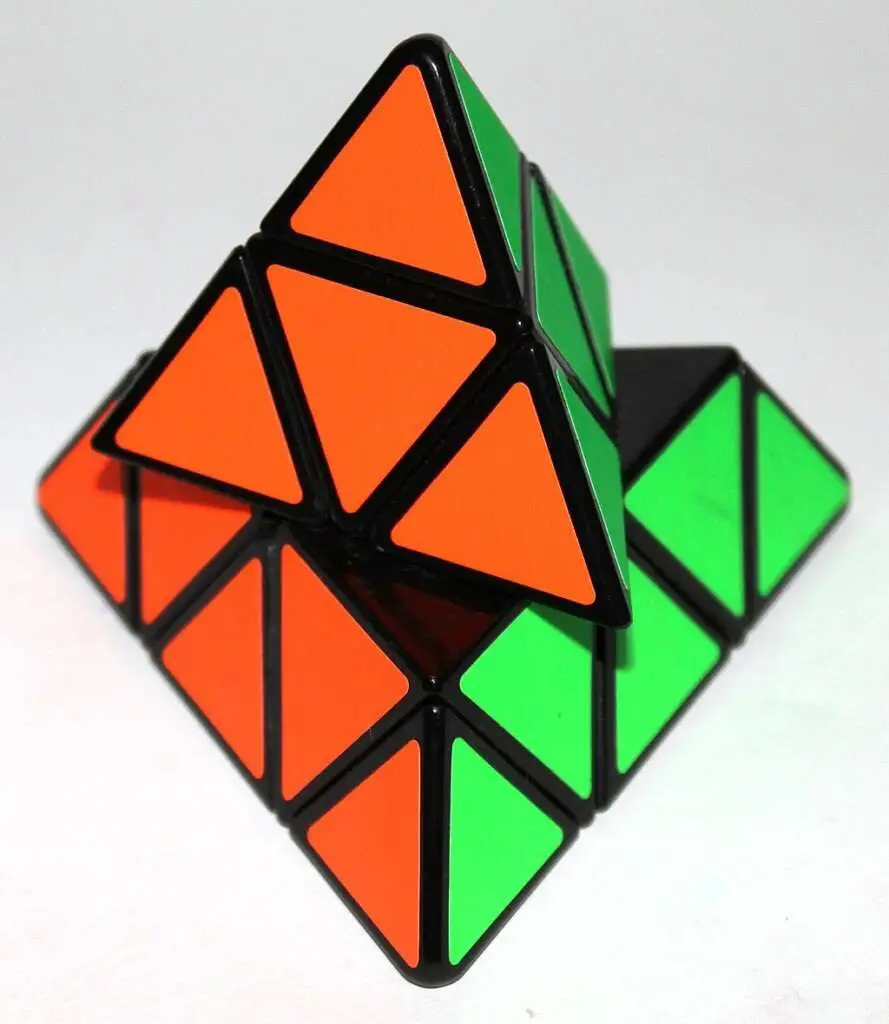
Inspired by Rubik’s Cube, Pyraminx offered a new twist. Created by Uwe Meffert in 1971, it gained traction in the early 80s. The tetrahedral puzzle boasted triangular matchable pieces, challenging players to match colors on each side. Pyraminx’s popularity rivaled Rubik’s Cube, showcasing the era’s fascination with geometric puzzles.
Nostalgic Staying Power: A Toy Empire
Beyond the mentioned toys, 80s kids enjoyed an array of enduring franchises like Teenage Mutant Ninja Turtles, G.I. Joe, Barbie, and more. Traditional favorites like Colorforms, Shrinky Dinks, Monchichi, and Etch-a-Sketch remained beloved. The era witnessed Dungeons and Dragons’ rise, along with interactive gaming. From toys to games, the 80s brought an exploration of a vivid world before the internet, a truly nostalgic era.
Here are the sources and additional reading for the article about Unforgettable 1980s Kids Toys: A Journey Back in Time.
- “A Quick History of the Rubik’s Cube” by Hope Reese, Smithsonian Magazine, September 25, 2020.
- “He-Man and the Masters of the Universe: A Look Back” by Jamie Greene, SyFy, January 14, 2019.
- “The Invention of the Rubik’s Cube: An Interesting Twist” by Monica Smith, Lemelson Center for the Study of Invention and Innovation, Smithsonian Institution of American History, July 15, 2014.
- “Remembering Opus and Bill the Cat from ‘Bloom County'” by Chris Foran, Milwaukee Journal Sentinel, May 26, 2016.
- “One Last Little Peek: The Final Strips, the Special Hits, the Inside Tips 1980-1995” by Berkeley Breathed, Little, Brown and Co., 1995.
- “Pillow People and Pillow Pets: A Blast from the Past” (no author), Retroist, September 18, 2014.
- “Pac-Man: A Journey in Video Game History” by Jennifer Rosenberg, ThoughtCo, March 24, 2020.
- “The History Behind Pong, Atari, and Home Video Games” by Angela Modany, National Museum of American History, April 17, 2012.
- “The Transformers: Exploring Their Legendary History” by Phil Kollar, GameInformer, December 10, 2009.
- “Top Christmas Toys of the 1980s” (no author), Everything 80s Podcast, November 28, 2019.
- “Speak & Spell: A Notable Device in Consumer Electronics” by Brian Santo, IEEE Spectrum, October 31, 2019.
- “The Legendary Story of Voltron” by Nate Osterman, CompleteSet.com, October 5, 2020.
- “The NES: How It All Began and Saved the Gaming Industry” by Andrew Cunningham, ARS Technica, December 9, 2021.
- “Simon: The Challenging Memory Game” by Owen Edwards, Smithsonian Magazine, September 2006.
Read More: Most famous streaker Erica Roe stripped off again at age 56 to raise money for cancer


